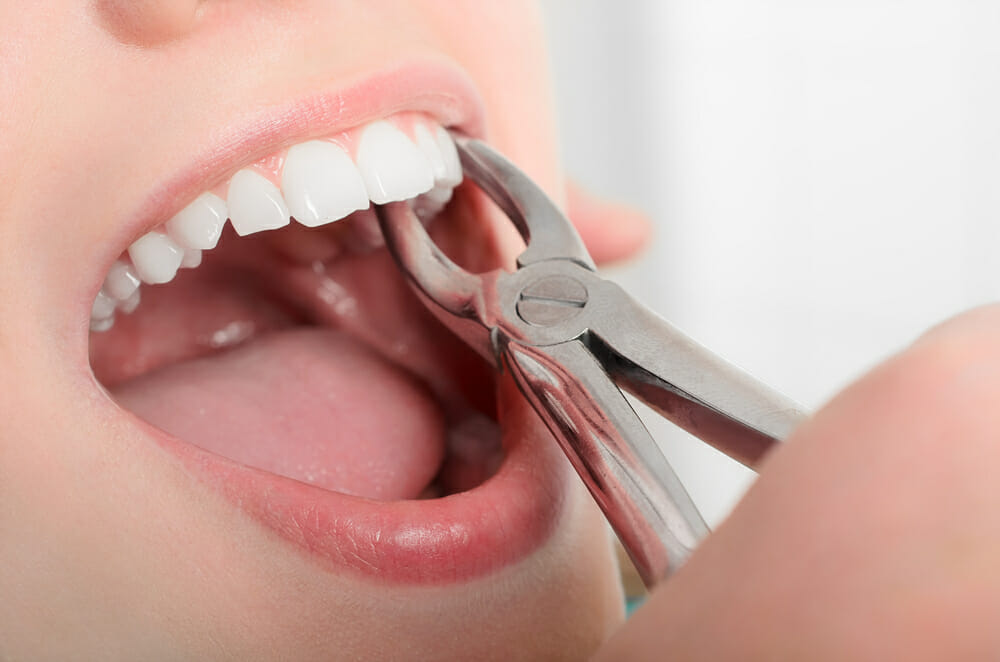What is a dental extraction?
A dental extraction is the process of removing a tooth from its socket in the jawbone. This may be necessary for various reasons, such as severe tooth decay, gum disease, overcrowding, or trauma. The procedure is typically performed by a dentist or oral surgeon using specialized instruments.
Are you experiencing dental pain or discomfort and wondering if dental surgery is the right solution? Understanding dental extractions can help you make an informed decision about your oral health. In this post, we’ll cover various topics related to dental extractions, starting with why they are necessary and their impact on oral health. We’ll also discuss the dental extraction process, from initial assessment to ensuring proper healing afterward. Additionally, we’ll delve into different types of dental extractions, including simple tooth extraction and surgical dental extraction. Finally, we’ll cover potential complications, how to deal with them, and what to expect during the healing process after a dental extraction. Keep reading to learn more about this crucial aspect of oral care.
The Impact of Dental Extractions on Oral Health
Removal of damaged or infected teeth not only improves overall oral health but also prevents the spread of infection to surrounding teeth and gums. Additionally, it alleviates pain and discomfort caused by damaged or impacted teeth and allows for proper alignment of remaining teeth. Moreover, dental extractions provide a foundation for future dental procedures such as orthodontic treatment or dentures. Extraction sets the stage for a healthier oral environment by addressing immediate dental issues and minimizing the risk of complications like periodontal disease. There is clear evidence that dental extractions play a crucial role in maintaining oral health and promoting the well-being of individuals.
Initial Assessment and Special Investigations
Several factors are carefully examined during the initial assessment and special investigations for dental extractions. The dentist evaluates the tooth’s position, condition, and surrounding bone. X-rays or other imaging techniques may be used to assess the tooth and its roots. Furthermore, the patient’s oral health and medical history are considered to identify potential complications or risks associated with the extraction. Based on this assessment, a personalized treatment plan is developed to ensure the best possible outcome. This comprehensive evaluation helps determine the most appropriate approach for the extraction procedure, especially in cases with a history of refractory periodontitis, tooth mobility, bleeding, or inflammation of the gums.
Consent and Anesthesia Procedure
During the consent and anesthesia procedure for dental extractions, it is essential to have a thorough discussion with the patient about the benefits and potential risks of the procedure. Informed consent must be obtained from the patient or their legal guardian before proceeding. The appropriate anesthesia method, such as local or general anesthesia, is selected based on the patient’s needs. This ensures that the extraction is painless and comfortable for the patient. Throughout the procedure, vital signs are monitored to ensure the patient’s safety and comfort. With oral extractions, sedation options are also considered to provide a relaxed and calm experience for the patient.
Simple Tooth Extraction
A simple tooth extraction removes a fully erupted and structurally intact tooth. This procedure involves teeth with visible and accessible roots, which can be grasped and removed using forceps. Simple tooth extractions are typically performed under local anesthesia to ensure the patient’s comfort. The dentist carefully loosens the tooth from its socket during the extraction and gently pulls it out. This type of extraction is commonly used for healthy teeth that do not require additional surgical techniques. Using forceps and local anesthesia helps make the procedure relatively quick and straightforward.
Surgical Dental Extraction
Experienced oral surgeons perform surgical dental extractions, also known as oral surgery, to remove affected teeth. An incision is made in the gum to access the tooth during the procedure. This area is numbed with local anesthetic, ensuring a painless extraction. Specialized dental tools such as forceps are then used to remove the tooth carefully. Surgical dental extractions are often necessary in cases of impacted wisdom teeth. Oral surgeons can safely and effectively address more complex dental extractions using their expertise and specialized instruments.
Immediate Post-Extraction Management
Immediate Post-Extraction Management involves several crucial steps. After a dental extraction, the dentist places gauze on the extraction site to control bleeding. This is followed by forming a blood clot in the socket to promote healing. It is not uncommon for the socket to feel sore and swollen after the extraction. Patients must avoid vigorously rinsing their mouth to prevent dislodging the blood clot. The dentist also provides instructions on pain management and diet to ensure proper healing. Proper immediate post-extraction management plays a vital role in the success of the extraction procedure.
Recognizing and Addressing Complications
Complications can arise after dental extractions, and it’s essential to recognize and address them promptly. One common complication is dry socket, also known as alveolar osteitis, a painful condition when the blood clot in the extraction site becomes dislodged or dissolves. Inflammation and infection are also possible complications, and dentists monitor patients for signs such as fever or pus. Treatments like antibiotics or additional dental procedures may be necessary to address complications. Proper oral hygiene is crucial to prevent complications like gum disease. Patients can promptly recognize and address these complications and ensure a smooth and successful recovery.
Conclusion
In conclusion, understanding the different types of dental extractions is essential for maintaining good oral health. Whether a simple tooth extraction or a surgical procedure, each type requires proper assessment, anesthesia, and post-extraction care to ensure a smooth recovery. It’s crucial to follow your dentist’s guidelines and take care of your oral hygiene during the healing process. Any potential complications should be recognized and addressed promptly to prevent further issues. Remember, dental extractions may be necessary to alleviate pain or prevent further damage to your teeth and gums. If you have any concerns or questions, don’t hesitate to consult with your dentist for personalized advice and guidance.

